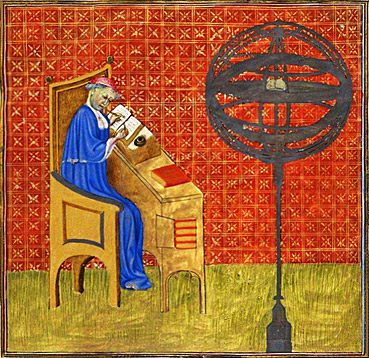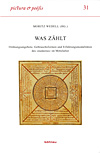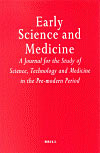
Nicole Oresme
|
|
Miniature of Nicole Oresmes Traité de l’espere, Bibliothèque Nationale, Paris, France, fonds français 565, fol. 1r.
|
|
Born 1323 in Allemagne (west of Riez), France
Died July 11, 1382 in Lisieux, France
|
|
|
Further Material on Nicole Oresme and Ulrich Taschow
|
| If you have any suggestions, an interesting link or commentary on Oresme and his surroundings, please feel free to contact us by info@nicole-oresme.com. We will publish your contributions on this Nicole Oresme site. |
|
|
Ulrich Taschow
Die Welt auf dem Reissbrett: Klingende Physik, Metrologie des Geistes und die Erfindung der exakten Naturwissenschaften
in: Was zählt. Ordnungsangebote, Gebrauchsformen und Erfahrungsmodalitäten des »numerus« im Mittelalter, April 2012, S. 295-331, Böhlau, Köln, ISBN-13: 978-3412207892 |
 |
Zusammenfassung
Der Artikel liefert einen Überblick über die bis dato weitestgehend unbekannten Ursprünge der neuzeitlichen Mathematisierungs- und Quantifizierungsintentionen und -methoden im 13./14. Jahrhundert, die entgegen positivistischer Wissenschaftstheorien weder aus einer praktischen Notwendigkeit heraus erwuchsen, noch im Verständnis des heutigen naturwissenschaftlichen Paradigmas einer Überprüfung in der Praxis standhalten mussten. Dennoch und gerade deshalb bilden diese erstaunlichen mittelalterlichen Innovationen die bis heute niemals reflektierte weltanschauliche, wissenschaftsreligiöse und wissensdogmatische Grundlage der westlichen Naturwissenschaften bis in die Gegenwart.
Dieser Blick auf die mittelalterlichen Ursprünge unserer modernen Naturwissenschaften zeigt deutlich, wie sehr der wissenschaftliche Erkenntnisprozess als ein konstruktiver, geistiger Vorgang begriffen werden muss, bei dem keine Wirklichkeiten abgebildet, sondern vielmehr virtuelle Wirklichkeiten im Bewusstseinsraum geschaffen werden, die dann in der Folge symptomatisch mit so etwas wie äußerer Wirklichkeit gleichgesetzt bzw. verwechselt werden. Reflektieren wir also über die Geschichte der Mathematisierung im Mittelalter, so reflektieren wir im eigentlichen Sinne über die Geschichte der Konstruktionen unseres Bewusstseins und damit letztlich über die psychologischen Arbeits- und Archivierungsprinzipien unseres Bewusstseins.
In einem ersten methodischen Teil werden dazu erkenntnistheoretische und psychohistorische Voraussetzungen gesetzt.
Ein zweiter Teil ist der Diskussion der historischen Voraussetzungen für die Favorisierung quantitativ-metrischer Strategien der Weltaneignung gegenüber anderen Weltzugängen gewidmet.
Ein dritter Teil referiert exemplarisch den vormathematischen Boden, aus dem heraus sich eine angewandte Mathematik entwickeln konnte.
In einem vierten Teil werden konkrete Innovationen des 13./14. Jahrhunderts im Bereich der angewandten Mathematik am Beispiel der hochinnovativen mittelalterlichen Musica als universalem Modell vorgestellt, wobei insbesondere Innovationen Nicole Oresmes im Fokus stehen.
Der Artikel schließt mit einem kulturkritischen Resümee.
|
|
|
zum Artikel >>> |
Ulrich Taschow
Die Bedeutung der Musik als Modell für Nicole Oresmes Theorie „De configurationibus qualitatum et motuum“,
in: Early Science and Medicine, Vol. IV, No. 1 February 1999, S. 37-90, Brill, Netherlands |
 |
Summary
This essay is dedicated to the search for the origins of our modern quantitative and metric approach to nature which, according to evidence here presented, are to be found in the medieval science of acoustics. The central figure in our argument is Nicole Oresme, whose Tractatus de configurationibus qualitatum et motuum of ca. 1350 featured novel graphic techniques which figuratively represented intensities of permanent qualities and intensities of qualities and velocities over time in terms of multidimensional functions. Closely related to this method was the development of a qualitative measure of qualities (quantitas qualitatis). This new and purely mathematical view of the problem rendered the century-old debate over the ontological status of qualities (intensio et remissio formarum) quite redundant. It is usually claimed that Oresme's method lacked both an empirical base and a measurable application, that it possessed a merely hypothetical or metaphysical nature and that it was given to figurative symbolism. However, this view is badly mistaken, for it ignores the results presented in Oresme's large section on music. For upon closer scrutiny, Oresme's views on music reveal themselves as the core to his concerns and as our key to the complete re-evaluation of his methodology. His musical doctrines are also of great interest as precursors to the seventeenth century's concerns with the scientific bases of acoustic and Helmholtz' nineteenth-century investigations of sound psychology.
|
|
|
Ulrich Taschow
Theorie der Wissenschaft und Theorie der Musik in Nicole Oresmes „De configurationibus qualitatum et motuum“
in: Systematische Musikwissenschaft, Towards the 21st Century, 1997, V/2, S. 289-334 |
 |
Abstract
In this essay it is intended to undertake an investigation into the origins of our modern strategies of quantification and measurement of nature, with a particular focus on the beginnings of a scientific acoustics. Based on an analysis of the Tractatus de configurationibus qualitatum et motuum of Nicole Oresme (14th century) the text presents new acoustical and musical results in the fields of history of science and musicology. Furthermore the article reveals that - contrary to today‘s self-image of music and science - music was an important model for the development of analytical geometry as well as for the evolution of empirical-metrical intentions, convictions and methods and, thus, for the genesis of the modern natural sciences in general. The history of scientific acoustics must be regarded as having started with Oresme in the 14th century already, who in his approach anticipated Helmholtz‘s overtone-theory etc...
|
|
|
| Copyright ©avox media 2003-2017 All Rights Reserved. |
|


